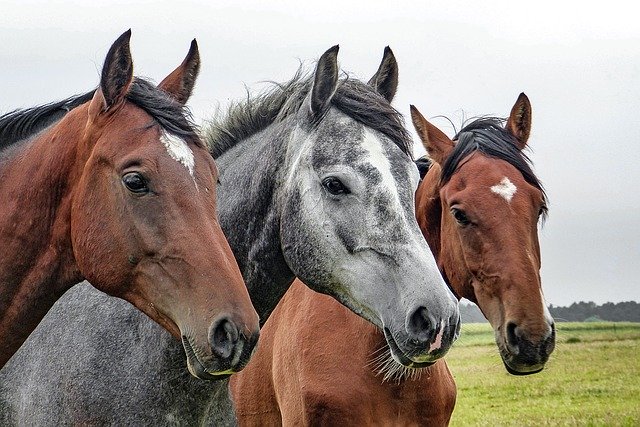The absolute first thing we as a whole appear to see about a horse is its shading, immediately followed by its markings. Horses are as of now flawless and glorious animals, and their jacket hues appear to improve that magnificence. Horses arrive in a wide assortment of hues and regularly include various varieties inside a specific shading. Here we present to you the most common colors you will find in the horse breeds.
Gray
Gray horses can be brought into the world without any shading, and help as they age. Most will in the long run gray out to either a totally white or a “bug chomped” hair coat. Generally “white” horses are really grayed with a completely white hair coat. A gray horse is recognized from a white horse by brown complexion, especially perceptible around the eyes, gag, flanks, and different areas of flimsy or no hair. Varieties of gray that a horse may display over its lifetime incorporate Salt and Pepper or “steel” gray, Dapple gray, Flea Bitten gray, and Rose gray.
Black
A black horse has a body, head, legs, mane, and tail that are generally black. The shading is a valid, or dim, black everywhere throughout the horse with no areas that are brownish, reddish, or a lighter shading. It ought to be noticed that white markings do show up on black horses, and are not considered to be the lighter colorings that would make a black horse be classified as some other shading. Some black horses can blur or be “burned from the sun,” which implies their black hairs can get blanched to a lighter shading on account of sun introduction. A horse this way, be that as it may, is as yet a black horse. Friesian horse, Murgese, and Ariegeois are some of the horse breeds that are black.
Blue Roan
A blue roan horse has a body with a blend of black and white hairs. The head and legs every now and again have more black hair than white, causing them to seem darker. In any case, there are special cases to having darker legs, especially inside the draft horse breeds. The horse in the photograph beneath is a blue roan draft horse. As you can see his legs are not darker, he has tall, white stockings.
Chestnut
The chestnut coat shading covers a wide scope of red shades, from light shades of coppery-red to more profound reddish browns. An exceptionally dim chestnut is now and again called liver chestnut. Chestnut horses won’t have any black hairs. In this manner, a chestnut horse can have legs a similar shading as its body or lighter, yet can’t have black legs like some different hues. The manes and tails of a chestnut horse are a similar shading as the body, or lighter. If the mane and tail are recognizably lighter, they are classified “yellowish.”
Bay
Bay horses have brown bodies with black manes, tails, and focuses on their legs, appearances, and ears. There are numerous varieties of the Bay coat and the primary shading varieties are Dark bay which is extremely dim red or brown hair, difficult to recognize from seal brown, Blood bay which is splendid red hair; frequently considered basically “bay” and Brown which is utilized by some breed vaults to portray dim bays. There is an unmistakable allele that obscures a bay coat to seal brown, however, it isn’t the reason for all types of the dull bay.

